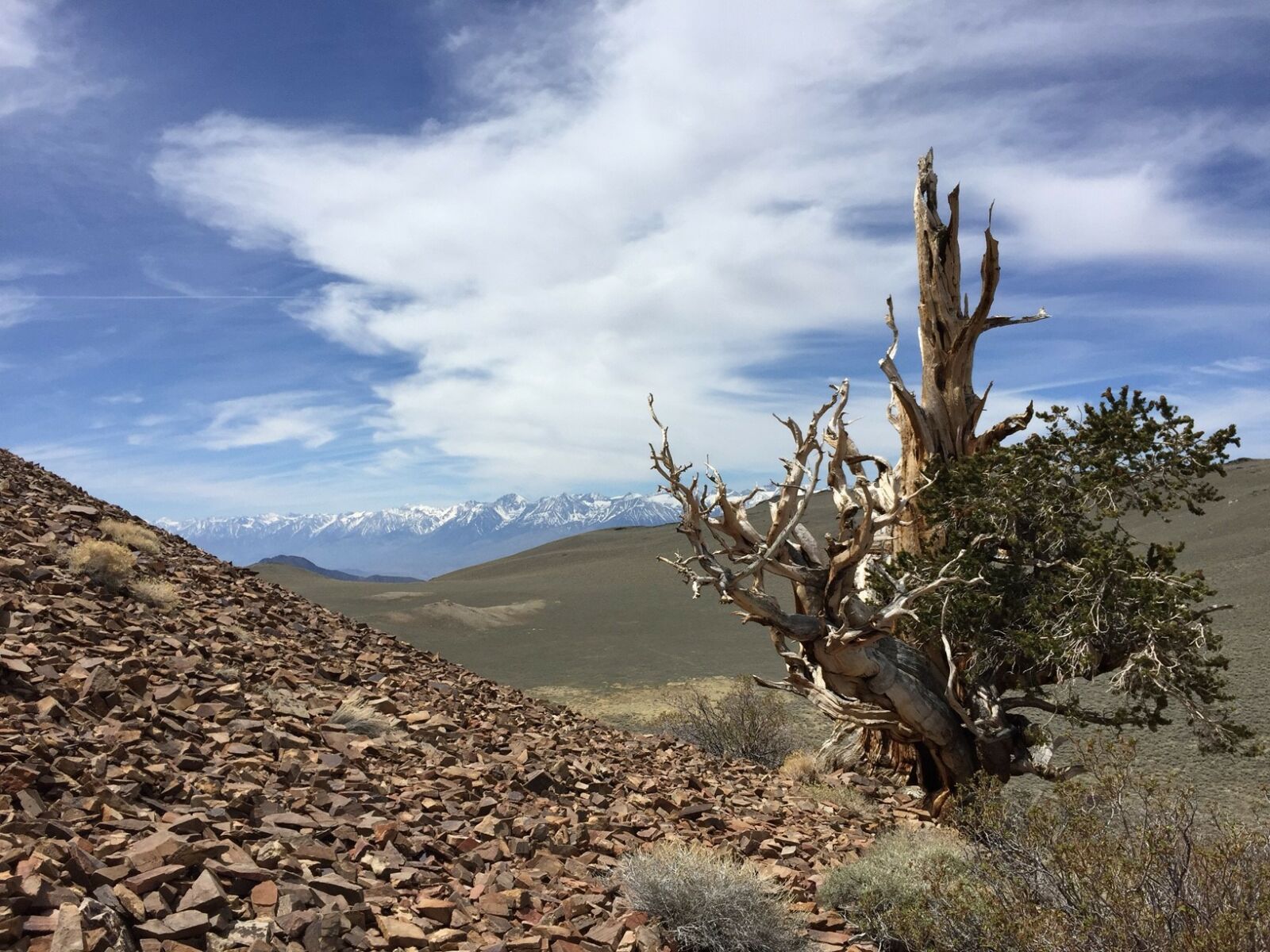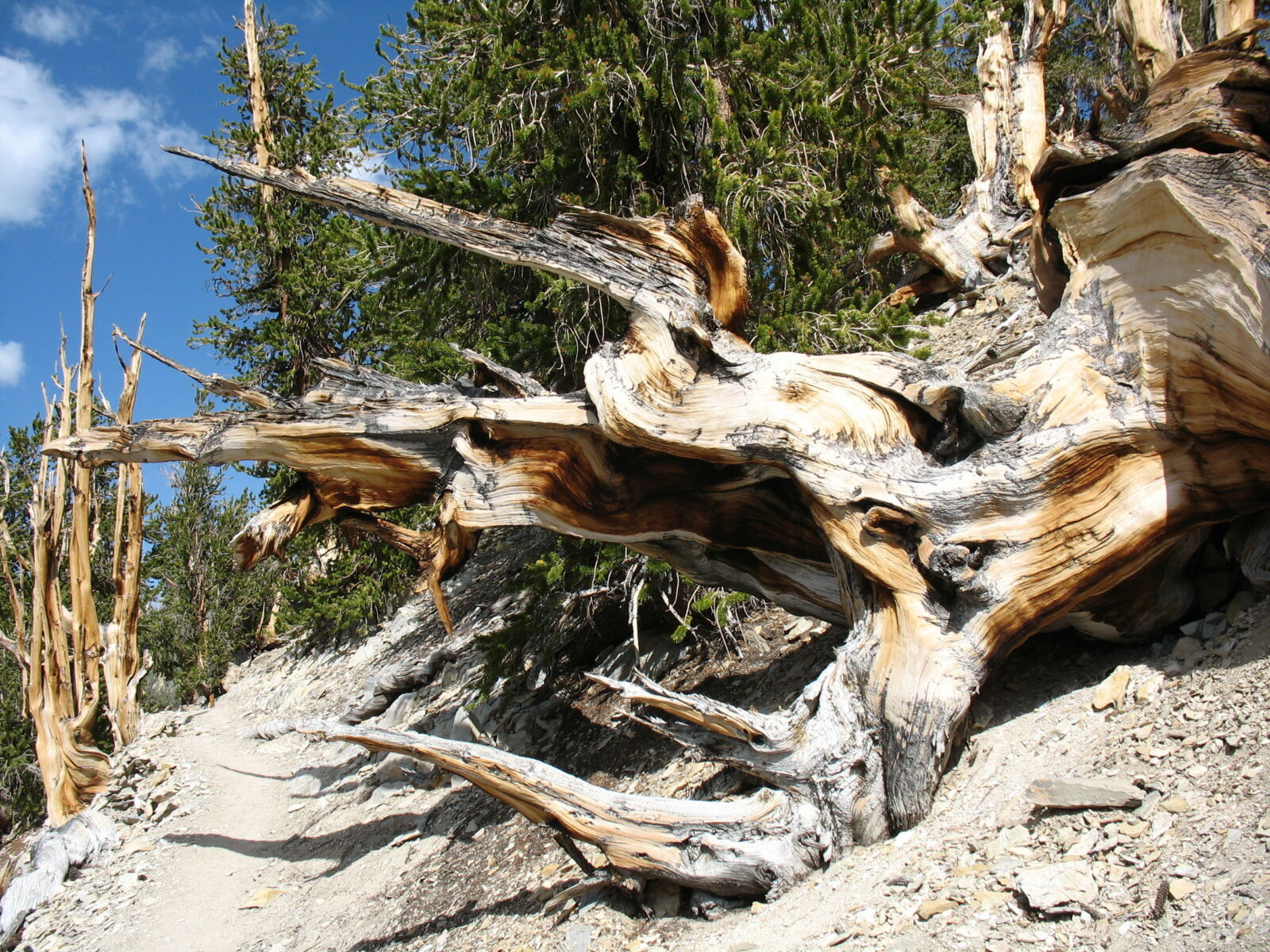When you first come face to face with a bristlecone pine, you just know that these trees have= lived a long life. You grasp it from the way the trunk bends and twists, from its stunted height, and from the parts that barely seem alive. Even if you don’t stop long to ponder these ancients, you can see that the wind and rain and snow and heat have taken their toll; you can see what the description “weathered” truly means.
Bristlecone pines are found sparsely scattered in small stands throughout California and Nevada (and some in Utah) at elevations from 9,800 to 11,000 feet. Their twisted trunks vary from 8 to 11 feet in diameter. Typically standing 30-feet tall or less in the dry, high-elevation zones, bristlecones can grow to 60 feet in low-elevation sites with more water.
The name bristlecone comes from the small prickly bristle that forms on the immature cones. When the cones mature to a size of 2 to 4 inches long and 1.2 to 1.6 inches wide, they are pollinated by wind from other nearby trees. Once the cones are fertilized, the seeds are released and dispersed by wind with the help of a small wing-like sheath attached to the seed.

Photo by Jayme Ohlaver
In the White Mountains of California, these trees have stood as sentinels for millennia. The “Ancient Bristlecone Pine Forest” is located in a small range of the White Mountains on the eastern edge of California. The grove is home to the famous 4,848-yearold Methuselah tree and to another that is an incredible 5,067 years old. They are the two oldest non-clonal organisms on Earth (meaning they don’t reproduce through cloning, making their trunks as old as their roots).
The incredible age of these contorted creatures has helped scientists better understand changes in climate and how to document the age of other carbon bearing materials. Based on the rings of the bristlecone trees in the White Mountains, researchers developed a tree history dating back 10,000 years.
This proved instrumental in recalibrating the radio carbon dating process and has provided more accurate understanding of when human civilizations inhabited past lands, what past volcanic eruptions have done to vegetation growth, and what our climate looked like thousands of years ago.

Nerissa Sinetos
Science aside, these trees humble a person who considers their enduring nature. They have been growing, absorbing carbon and producing oxygen on these barren dolomite mountains since before the pyramids in Egypt were constructed, around the time pre-Mayan society was forming. When Columbus crossed the Atlantic, these trees were already 4,000 years old.
Ready to walk among these aged wonders? Want to learn from their years of knowledge or steep in their ancient aura? Fortunately for you (and the trees), they live not in a private garden or fenced-in park, but on the Inyo National Forest, your public land. Start your visit at the Schulman Grove Visitor Center on the Inyo, high up in the White Mountains. The Center is open during the summer and provides educational exhibits. You can also take the famous 4.5-mile Methuselah trail where you can enjoy vast scenic vistas and try to guess which tree is Methuselah, as no sign points it out.
Yes, these gnarled specimens are well weathered. As you ponder them, take a moment to consider what 5,000 years of wind, sun, snow and rain would make you look like.

